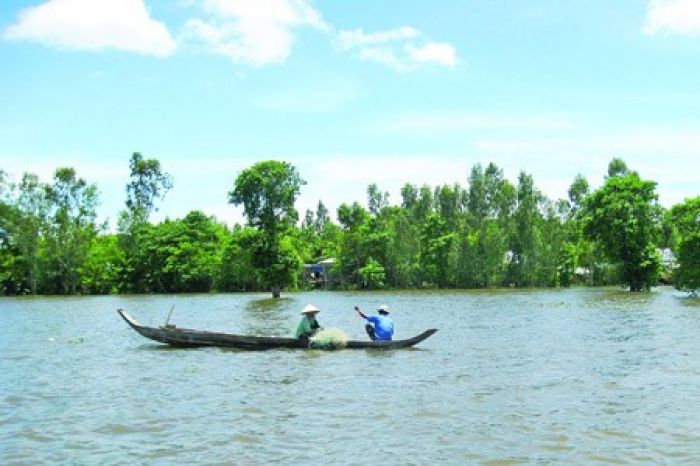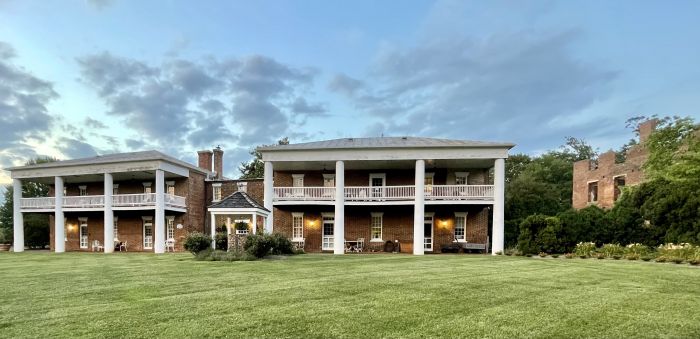
A 40-square-kilometer riverine island in the Mekong Delta province of An Giang carries a quiet, profound ambience
It would not be out of place to say that Cu lao Gieng (Gieng Island) has a touch of the divine.
Located in the middle of the Tien River on the border of Dong Thap Province, Cu lao Gieng (Gieng Island) was called Dinh Chau in one of the country’s most famous chorography records, Gia Dinh thanh thong chi (A Chorography of Gia Dinh City –now the southern region of Vietnam).
It was explained that the record’s author, Trinh Hoai Duc, a famous historian of the Nguyen Dynasty (1802-1945), came up with the name because the triangular island’s clean atmosphere, rich soil and abundant produce reminded him of Doanh Chau, one of three islands often mentioned in East Asian legends.
Whether the island is the stuff of legends can be debated, but that it has a predominantly sacred atmosphere becomes evident as one wanders about, constantly encountering pagodas and churches built during the beginning of the 19th century.
A complex of Roman Catholic structures on the island is particularly surprising. The most striking is Cu lao Gieng Church, which some records say was built by a French priest named Gazignol between 1879 and 1889 with construction materials brought in from France.
But other records say construction started in 1850, some 13 years before the famous Saigon Notre-Dame Basilica was built in the center of what is now Ho Chi Minh City. That would make Cu lao Gieng Church the oldest church in southern region.
More than a century later, the cathedral’s structure is almost unchanged as it stands, still and solemn, with an immensely high bell tower, small pointed towers and many other details carrying Romanesque and Gothic architectural designs.
Next to the church is a monastery of the Franciscans, an order of Roman Catholic Church. The building functioned as the friary for the religious group’s members in Mekong Delta provinces and Cambodia between 1872 and 1946.
However, after it was destroyed during the war in 1945, it was abandoned for many years.
Even though it still serves as a venue for meetings of local Franciscans, the monastery carries the look of an old, forgotten relic with its walls covered with green moss.
Then, there is the 138-year-old monastery of Providence Sisters, which was once a place where sisters and priests spent day and night taking care of the elderly, children and patients with incurable diseases. Just like the Franciscan monastery, it now shows signs of wear and tear as well as long-standing neglect.
Other famous Catholic structures on the island are the century-old Rach Sau Church and the St. Francis Church.
It is said that the presence of the Catholic Church on Cu lao Gieng started in 18th century when many Catholics, including French priests, took refuge here, as they tried to escape from the Nguyen Dynasty’s suppression of the religion. Cu lao Gieng is now considered one of the largest and oldest parishes in the Mekong Delta.
Apart from the churches, the island boasts several pagodas. The most impressive of them is the Phuoc Minh Pagoda, which has a nine-level tower and a three-door gate. Both the structures are built with the same traditional styles found in northern pagodas.
One of the most visited sites on the island is the complex of three graves that have the shapes of squid, fish and tortoise. This is the “tomb” of Ba quan Thuong Dang (three high-ranking officials), located in a place of worship for the ancestors of the Nguyen family who hailed from the central province of Binh Dinh.
Historical records show that Emperor Nguyen Anh (1762-1820) ordered the graves to be built as a memorial for famous general Nguyen Van Thu and his two younger brothers, who were all killed in a battle in 1801. The country was then going through a civil war between the Nguyen Dynasty and the farmer-ruled Tay Son Dynasty (1786-1802).
However, the officials were actually not buried in the graves, as their bodies were lost in the battle that took place at Thi Nai Lake in Binh Dinh. In 1814, the king’s people brought wax dummies to the island and buried them there.
The graves were named Mac – Ly – Quy, Chinese words for squid – fish – tortoise, but read in Vietnamese. The three words also make up a phrase which means “to return in silence.”
That is the kind of place that Cu Lao Gieng is – a place that tells many stories in silence.
Visit : vietnam tour
website : www.vietnamtraveltour.net














